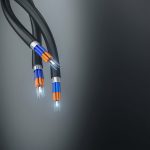Councils Criticise Misleading Ads for Broadband ISP Speeds in Rural Areas
The Local Government Association, which represents around 370 councils across England and Wales, has warned that the way broadband ISPs advertise their service speeds is particularly “misleading” for consumers in rural areas. Instead they want providers’ to promote “average” speeds and to also include upload speeds into their promotions.
The question of how ISPs advertise their speeds became a hot topic again earlier this year after the former Digital Economy Minister, Ed Vaizey MP, and a large number of other cross party politicians all called for the current approach to be reviewed by the Advertising Standards Authority (here). Now we can add the LGA to that list.
Advertisement
LGA Demands for Advertised Broadband Speeds
* Switch from using “up to” to average advertised speeds.
* Upload speed should also be a key measure of performance alongside download speed and clearly advertised to consumers.
* Ofcom must monitor the performance of connections delivered under the proposed 10Mbps USO to assess whether providers are adhering to its specifications, especially during peak hours.
* The USO minimum speed should be linked to the capability of current market speeds and lock in an obligation on Government to continue to raise broadband speeds amongst the hardest to reach. It should stipulate the USO minimum download speed as a percentage of average national download speeds.
At present the existing rules, which have been in operation since 2012 (here), require that the headline speed being promoted by an ISP must be achievable by at least 10% of their customers and that all speed claims are preceded with an “up to” qualifier. On top of that most ISPs already give consumers a more accurate estimate of performance during the sign-up process.
For example, a normal ADSL2+ line can technically deliver a download speed of ‘up to’ 20-24Mbps and an upload rate of ‘up to’ 1.4Mbps, but under the ASA’s rule most of the major providers must instead advertise a download rate of ‘up to’ 17Mbps (with some small variations) and sadly most don’t even bother to show upstream performance. A few ISPs have also completely ignored the ASA’s guidance and continue to show the peak theoretical rate, while others don’t even bother to show any speed and that can also be confusing.
The above example is particularly important because most consumers in rural areas are currently still being served by old fashioned ADSL or ADSL2+ based copper lines, which suffer signal degradation over distance. As a result those in rural areas often suffer much slower speeds than their urban counterparts because they usually live further away from the local BT exchange. This is also true of many so called “fibre broadband” FTTC (VDSL) lines, albeit measured from the local cabinet rather than an exchange.
Mark Hawthorne, Chair of the LGA’s People and Places Board, said:
“Councils are working hard to ensure everyone has good quality internet access.
Good digital connectivity is a vital element of everyday life for residents and can help them cut household bills, shop online for cheaper goods, stay in touch with distant relatives, access their bank accounts and even run their own businesses. As central and local government services increasingly become ‘digital by default’, more people will need to have faster and more reliable speeds.
The headline ‘up to’ download speed, which can be advertised legally, is misleading and does not reflect the reality of broadband service received across the country.
Broadband users deserve greater honesty and openness about the download and upload speeds they are likely to receive depending on their location.”
The LGA goes on to note that one part of the problem is already being tackled by the on-going Broadband Delivery UK based roll-out of fixed line superfast broadband (24Mbps+) connections, which currently cover around 90% of the UK and should reach around 95% by 2017 and then hopefully push to 97% by around 2019. BT are playing a big part here via FTTC/P deployments.
Advertisement
On top of that the Government’s proposal to introduce a 10Mbps Universal Service Obligation (USO) should, assuming they pick a strong set of technologies that can deliver the full Internet experience, help to improve connectivity for those in the final 3% of homes and businesses. We touched on one possible solution – Long Reach VDSL – only yesterday (here).
Never the less broadband is still a “Best Efforts” service for ordinary consumers, where capacity is shared and service quality can often be reduced in order to fit a lower price point; this is often particularly evident at peak times where some providers suffer a noticeable loss of performance. Hence the LGA’s aforementioned demand for change.
The huge variability of most modern broadband lines, which can often suffer a detriment to performance due to a wide variety of different factors (slow wifi, poor home wiring, long copper lines etc.), ultimately means that no approach is ever going to deliver 100% accuracy of advertise speeds. Even FTTH/P ISPs can suffer problems, albeit not usually due to their physical fibre optic lines (network capacity and weak end-user hardware can be more of an issue here).
Never the less replacing “up to” with an average rate does appear to have growing support and a recent survey conducted by ISPreview.co.uk found that the vast majority of respondents wanted to see tougher rules (here). The ASA are currently reviewing the matter and have hinted that they too may preference an average speed approach (here) and we hope they also encourage upload speeds to be shown too.
Advertisement
Mark is a professional technology writer, IT consultant and computer engineer from Dorset (England), he also founded ISPreview in 1999 and enjoys analysing the latest telecoms and broadband developments. Find me on X (Twitter), Mastodon, Facebook, BlueSky, Threads.net and Linkedin.
« BT Reveal Tech Details for Expanded Long Reach VDSL Broadband Trial

















































Comments are closed